There are many ways to age a piece of furniture, as seen in our previous article about the many styles of brassware throughout history. This article will look at the ever-changing styles of chair backs and legs that may give us a further understanding of when a chair was made and the fashion that inspired its structure.
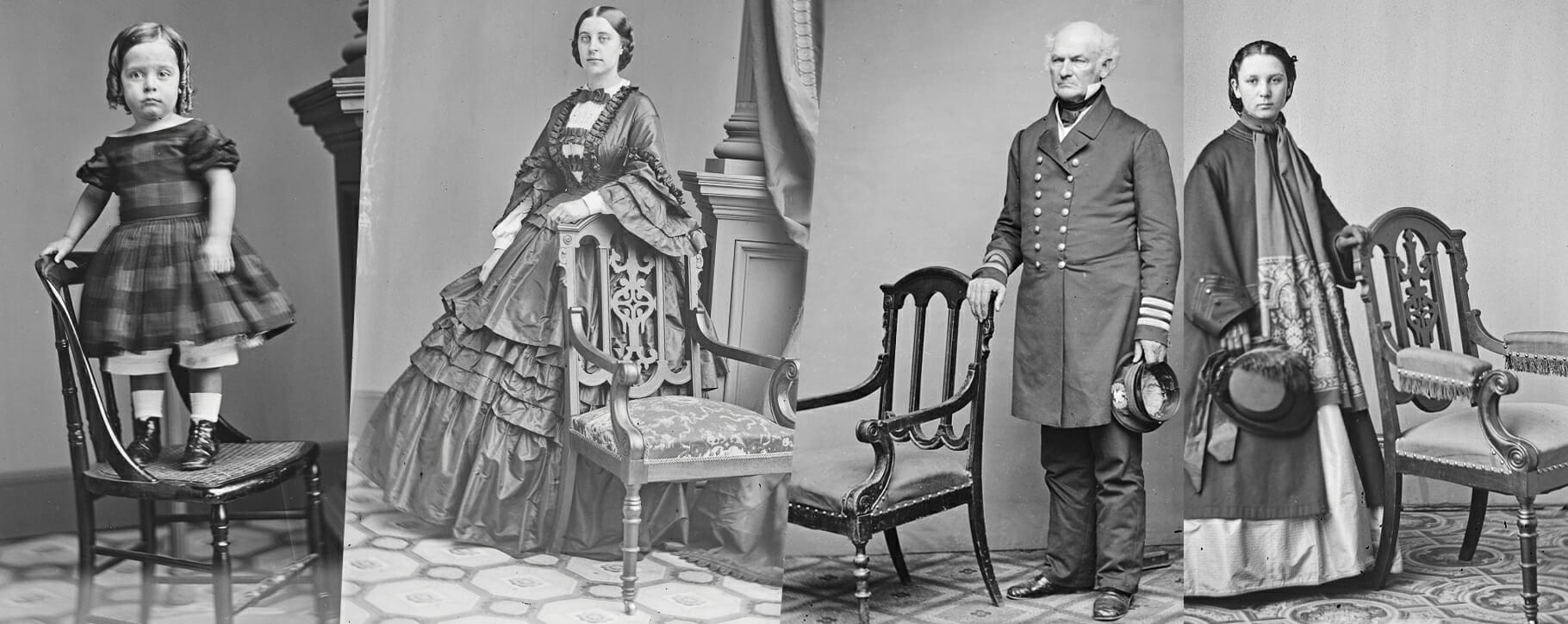
Chair back styles
Early chairs would have been completely crafted by hand and this approach will help you to decipher whether a chair is possibly original and of its era or a replica from the 19th century onwards. Early chairs from the renaissance period may have an intricate decorative bobbin design, such as the 16th century chair featured below (far left). Bobbin features may have broken off or become damaged over time and may require a historically sensitive restoration from our team.
However, chairs from prior to the 17th century are rare, as it was under the reign of William and Mary and Queen Anne that chair design became a prominent feature in aristocratic homes across the country. For a full history of chairs and their development, please see our in depth article here.
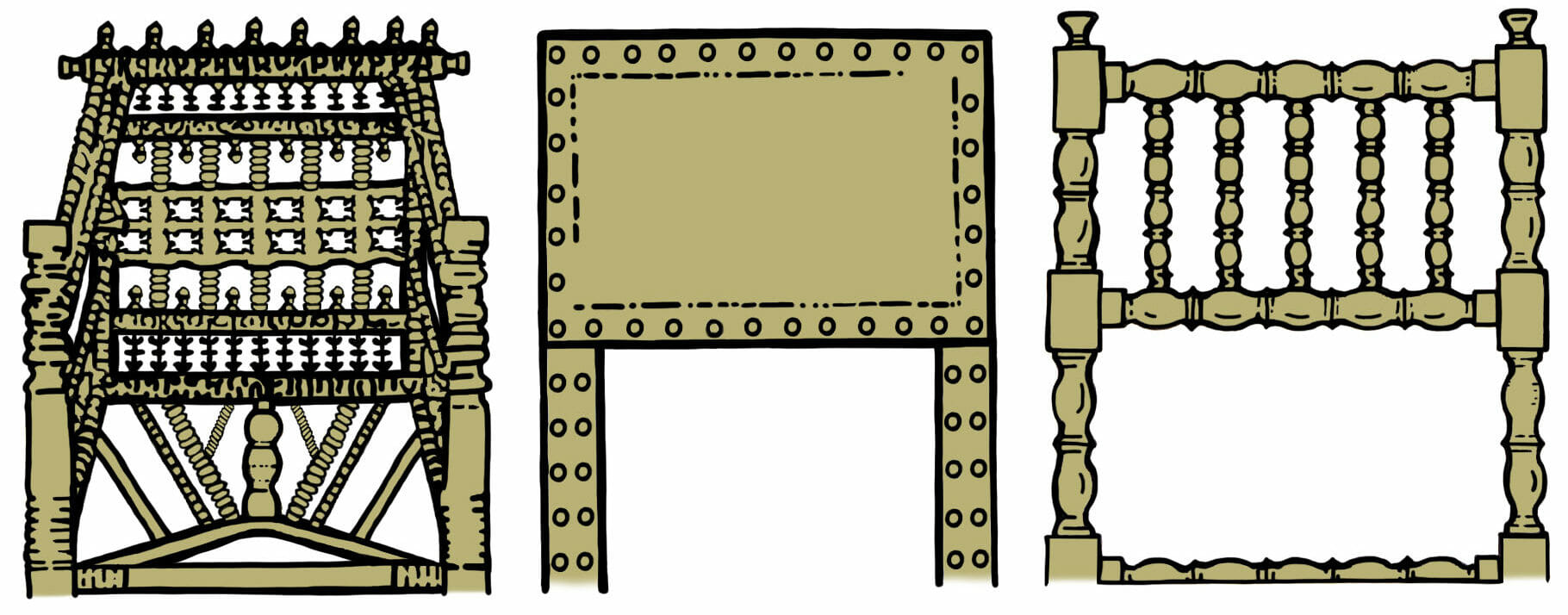
Above left: a 16th century bobbin chair, also known as a turned chair, thrown chair or spindle chair, this design was popular in the Elizabethan and Jacobean eras.
Above centre: a padded back from the mid 17th century on what is popularly referred to as Cromwellian chair due to its popularity with Puritans, it is a predecessor to the more luxurious farthingale chair.
Above right: a late 17th century bobbin turned chair.
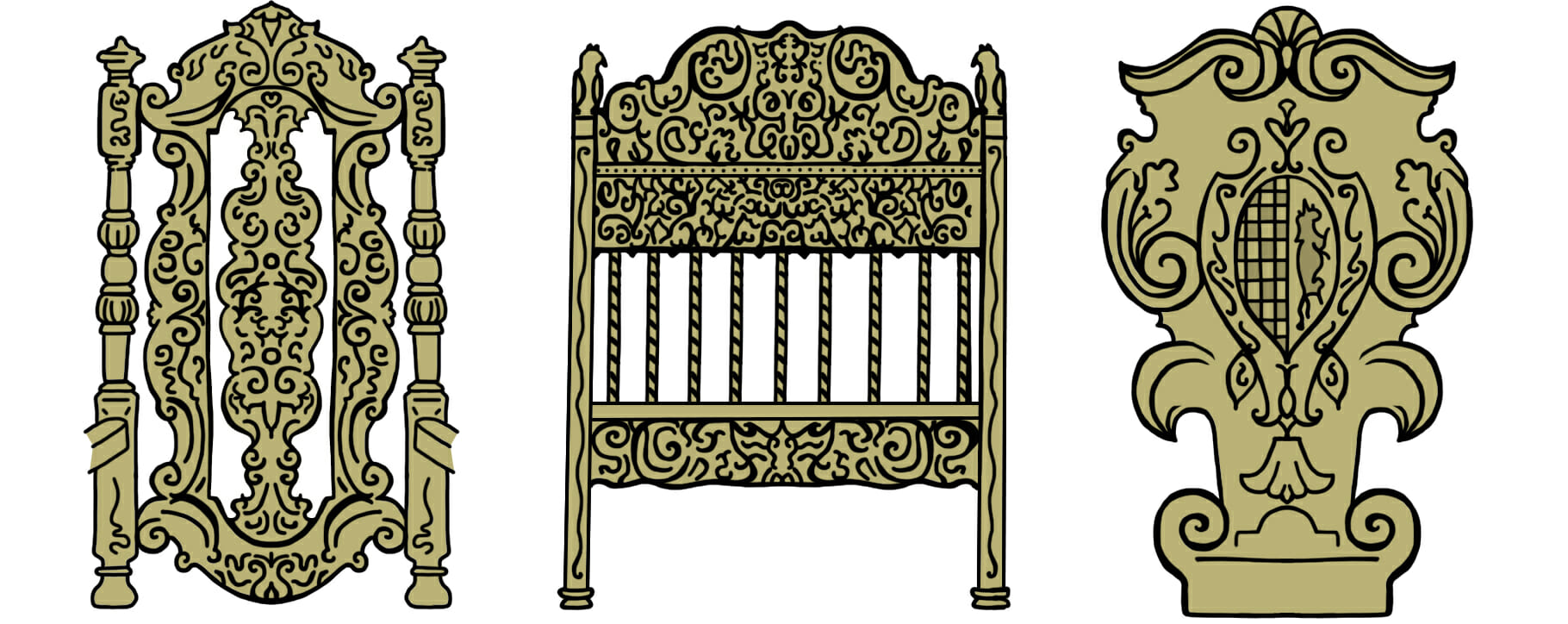
Seen above are examples of European chairs from the 17th century, these are often more detailed and decorated than English designs.
Above left: a Bavarian chair design from the late 17th century
Above: centre: a Flemish chair design from the second half of the 17th century.
Above: right: an Italian chair design from the 17th century, known as a sgabello chair.
Below left: a 17th century wooden armchair with an arcaded panel design.
Below centre: an early example of a 17th century caned chair back.
Below right: a Yorkshire chair design from the latter half of the 17th century.

Below and above are typical English designs from the 17th century, as the acorns on the far right chair suggests, they were most frequently made of native oak. 17th century wooden armchairs with a tall back (often with carved details) are known as the wainscot variety, these are usually made of oak or elm. These may have been replicated in the Victorian era when gothic revival styles were fashionable, to tell if a wainscot chair is original to the 17th century look for handmade joins and pegs or freestyle carvings that do not appear to be machine-cut. Over time the arms, rails and ear pieces (usually scrolls either side of the chair head) may have become damaged or replaced. Look for a difference in colour, timber or woodgrain to see if these were replaced at a later date. A 17th century chair would also show natural signs of age such as shrinkage and surface wear, having built up a patina of historic debris and dust.

Late 17th century chair designs may feature caning, this was first seen on English chairs after 1660 and was refined in craftsmanship by 1685 when the holes become more regular in shape. Due to its weakness, caning might have been damaged over time or worn with age, so replacements are common (but do not always affect the value of the chair). New caning is likely to be brighter as it takes some time to tone with age. Dutch and English chairs from the late 17th century may feature caning within a walnut structure, unfortunately walnut is more vulnerable to woodworm than oak and may have weakened considerably over time, this can be rectified by our furniture experts.
Above left: a chair from the era of Charles II with a caning panel and walnut wood carvings.
Above centre left: a late 17th century slat back chair.
Above centre right: a wainscot chair from the latter half of the 17th century.
Above right: a late 17th century chair with a simple panel back.
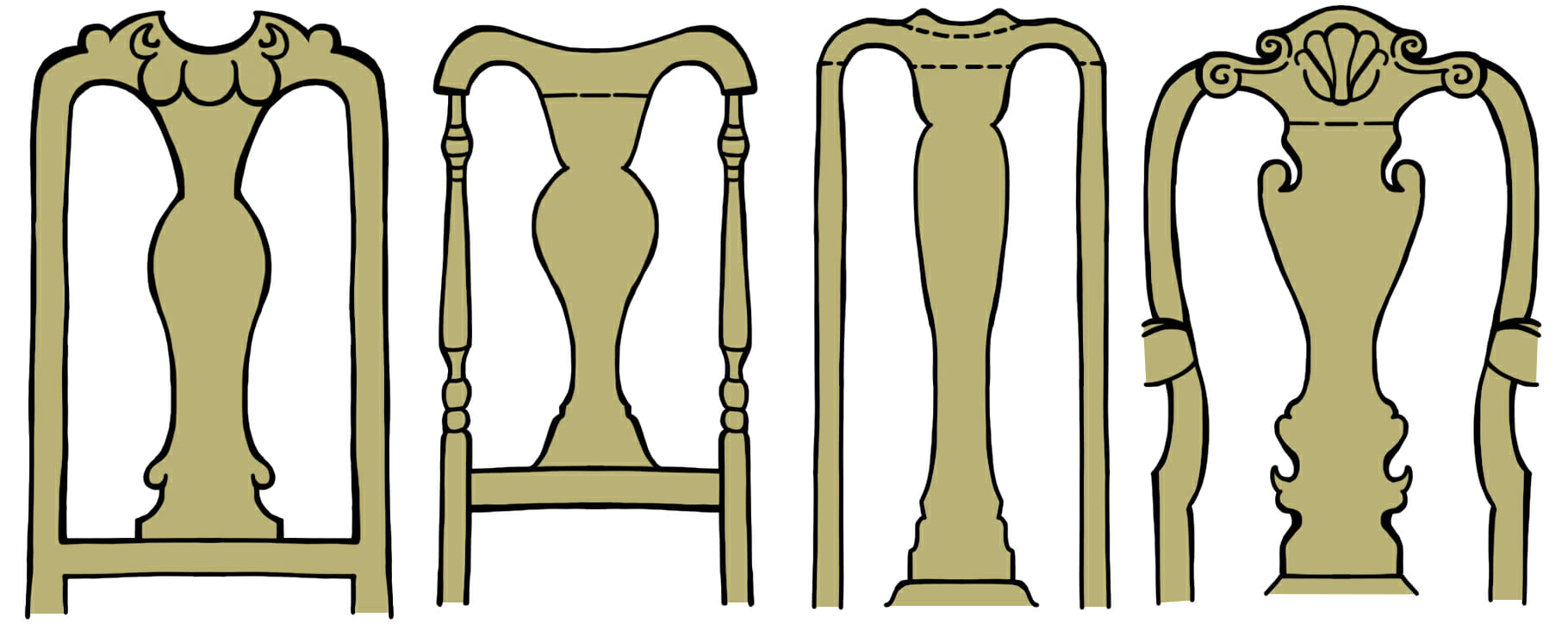
Early 18th century chairs often feature a vase-shaped splat (back panel) and cabriole legs (see examples 6-10 in our leg illustrations below). These are set apart from the later Chippendale chair designs as the splats do not feature pierced shapes, holes or fine detailing. This style of chair typically follows the shape of the sitters back and good English examples may be produced in oak or walnut. Walnut remained popular in chair design from 1660 until 1735 and was often used as a veneer.
Above left: a William and Mary / Queen Anne style chair from 1725.
Above centre left: a William and Mary / Queen Anne style chair from the early 18th century.
Above centre right: a Queen Anne style chair back from 1740-50.
Above right: a Queen Anne style armchair from 1750
Below left: an early 18th century Queen Anne design with an urn-shaped splat.
Below centre: a ladder back chair from 1760.
Below right: a Chippendale style carved chair from the mid 18th century.
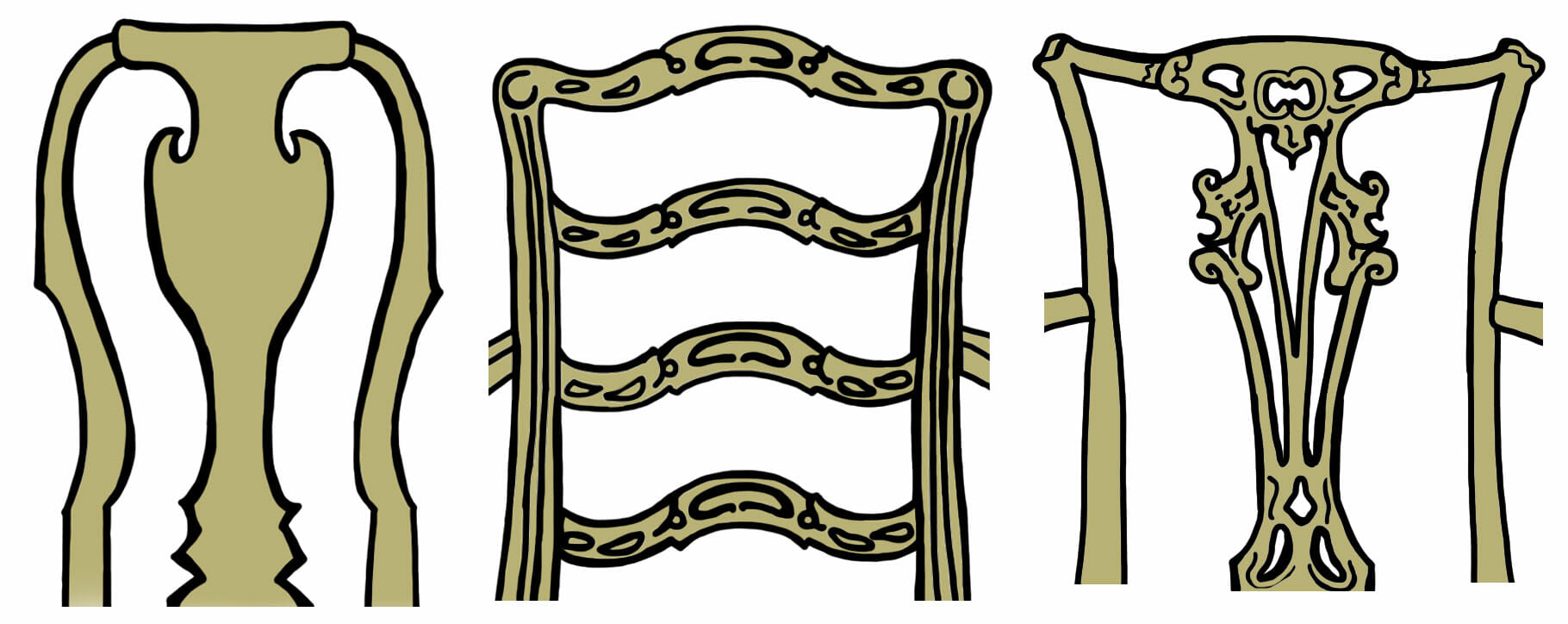
As the 18th century progressed, the tall and plain backs of William and Mary or Queen Anne furniture became more decorative. The most iconic styles of baroque and rococo interiors come from Thomas Chippendale, who published his Gentleman and Cabinet Maker’s Director in 1762. This popular directory was used by English craftsmen and so the term Chippendale does not always refer to pieces made by the famous designer but via the designs published in his catalogue. Chippendale’s book was published around the world, making it possible for the same designs to be found in Europe and North America. Good examples of Chippendale chairs are well proportioned and show excellent craftsmanship.
Below left: a William and Mary tall back chair with caning.
Below centre left: an early Georgian armchair with a tall, simple back.
Below centre right: a Chippendale chair design.
Below right: a Chippendale chair design.

Chippendale chairs are often crafted from mahogany, as exotic wood was now available, albeit a luxury material. Breaks sometimes occur in the top rail or decorative back pieces due to their fine detail, these may have been replaced in the past or be missing entirely.
Below: three Chippendale designs including a ladder back (far right)

Victorians often copied past styles and the publication of chair designs by Chippendale was used for a century or more after its initial creation. You can look for signs of a 19th century Chippendale chair through the use of machine cut elements, the over-use of typical Chippendale aspects all crammed into one design, the quality of the carving (this may lessen in the 19th century as chairs were more widely produced) and the use of corner brackets under the seat.
Below left: a Queen Anne chair from the transitional period of 1750 when designs became more typical of a Chippendale decorative scheme.
Below centre: a Chippendale chair from the 1760s.
Below right: a Chippendale chair from the late 18th century.
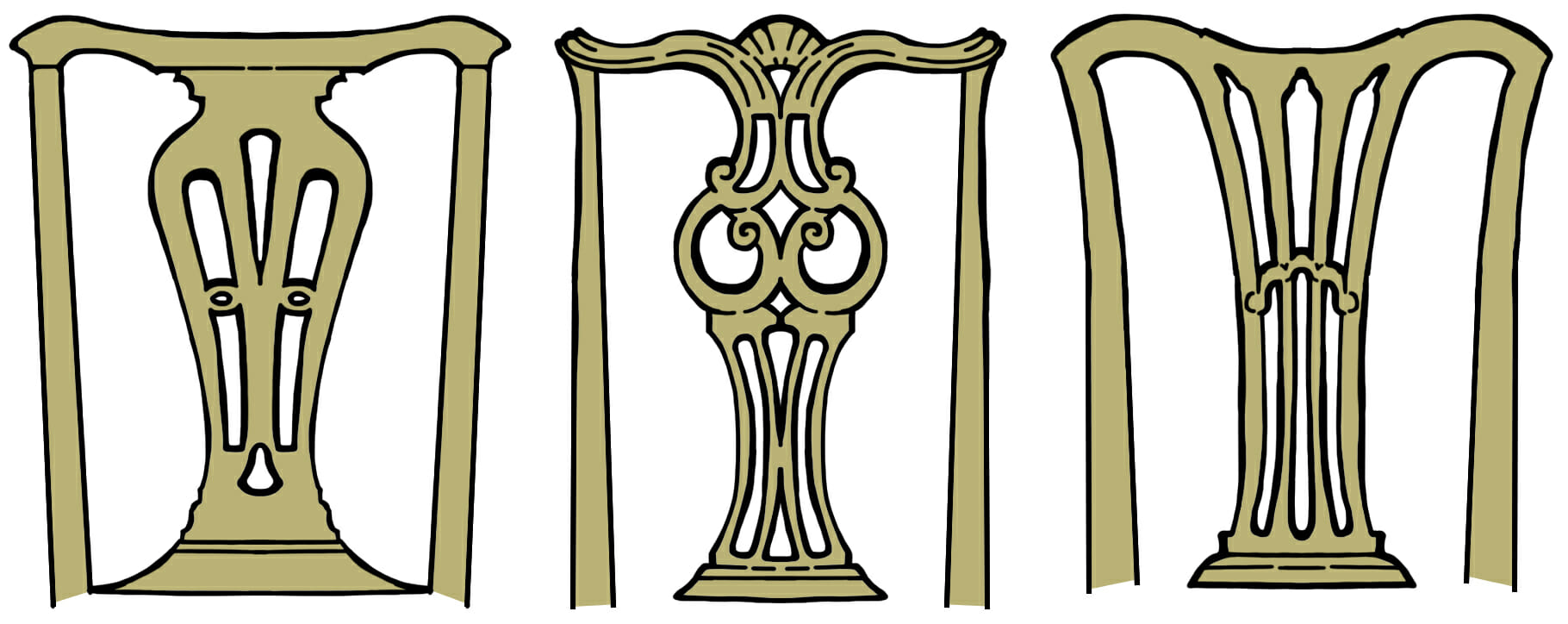
Chippendale craftsmanship also encompasses oriental designs, featuring replicas of Chinese carvings or upholstered seats with Chinoiserie scenes. By the later 18th century some examples may appear to be a little more toned back on decorative features as neoclassical tastes begin to take over.
Below: a ‘Chinese’ style Chippendale chair from 1760.
Below centre: a plain Chippendale dining chair from 1760.
Below right: a late 18th century design edging towards a neoclassical style, featuring a Hepplewhite style shield-back. Hepplewhite chairs are usually crafted from mahogany.
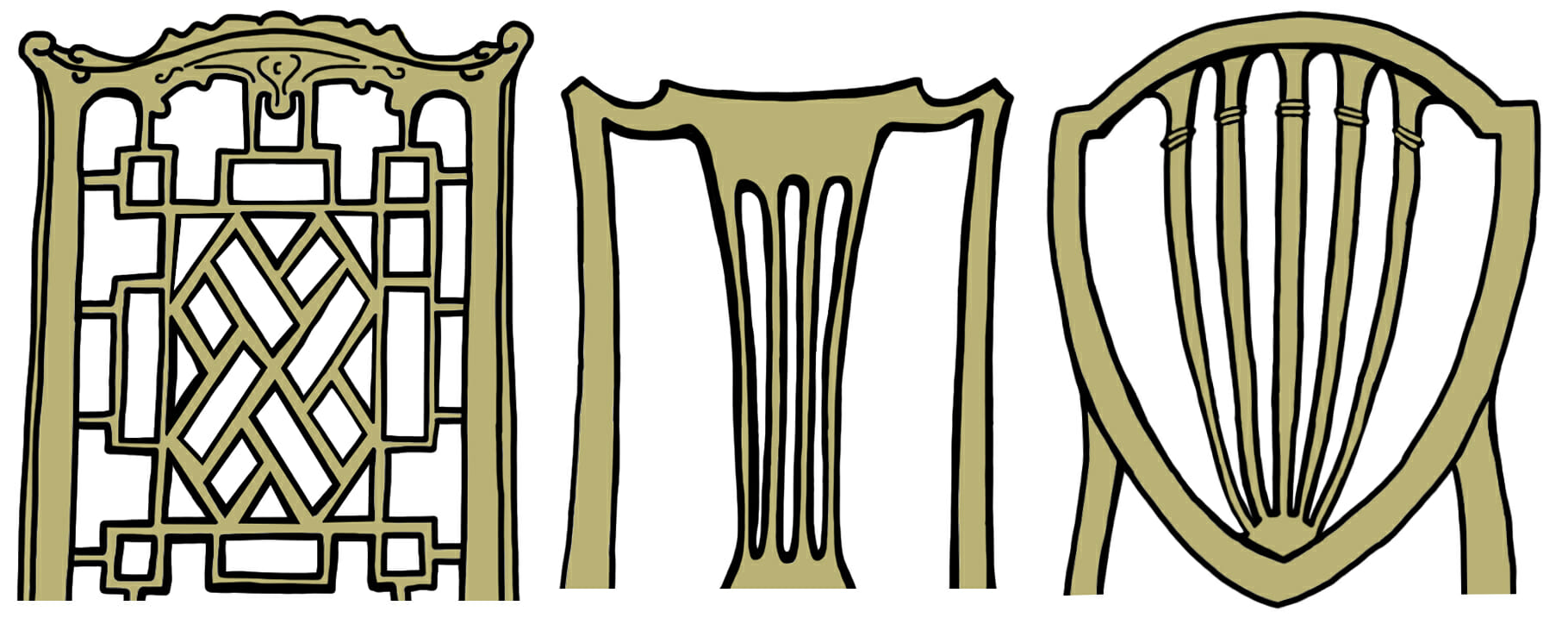
French and continental chair design often had luxurious tapestry upholstery, especially if it was created for a wealthy member of royalty or the aristocracy. In the rococo era, the wooden structure may have also been fully gilded.
Below left: a 17th century French chair design with a simple structure like the Cromwellian style seen above.
Below centre: a French chair design from 1730.
Below right: a Louis XV style chair from the mid 18th century.
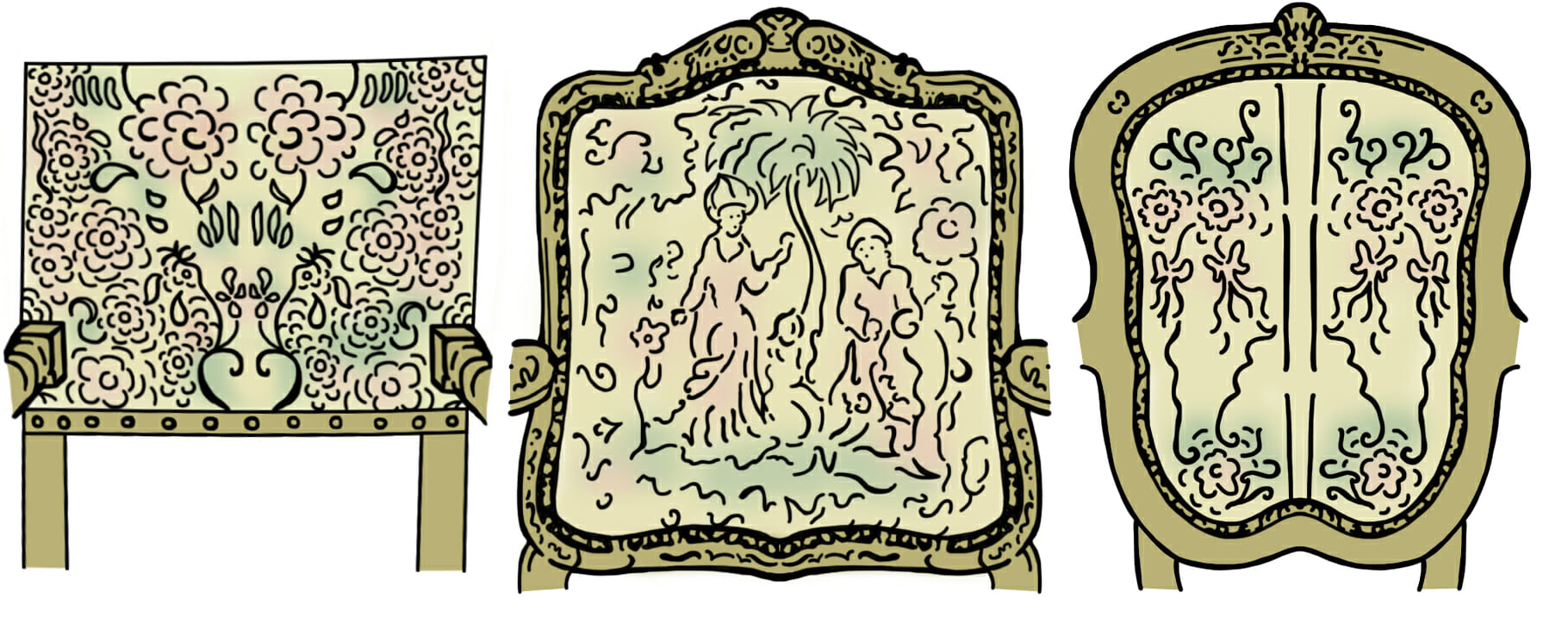
Below left: a Louis XVI style chair from 1775.
Below centre: a Louis XVI style chair from the late 18th century.
Below right: a decorative Dutch chair from the 18th century.
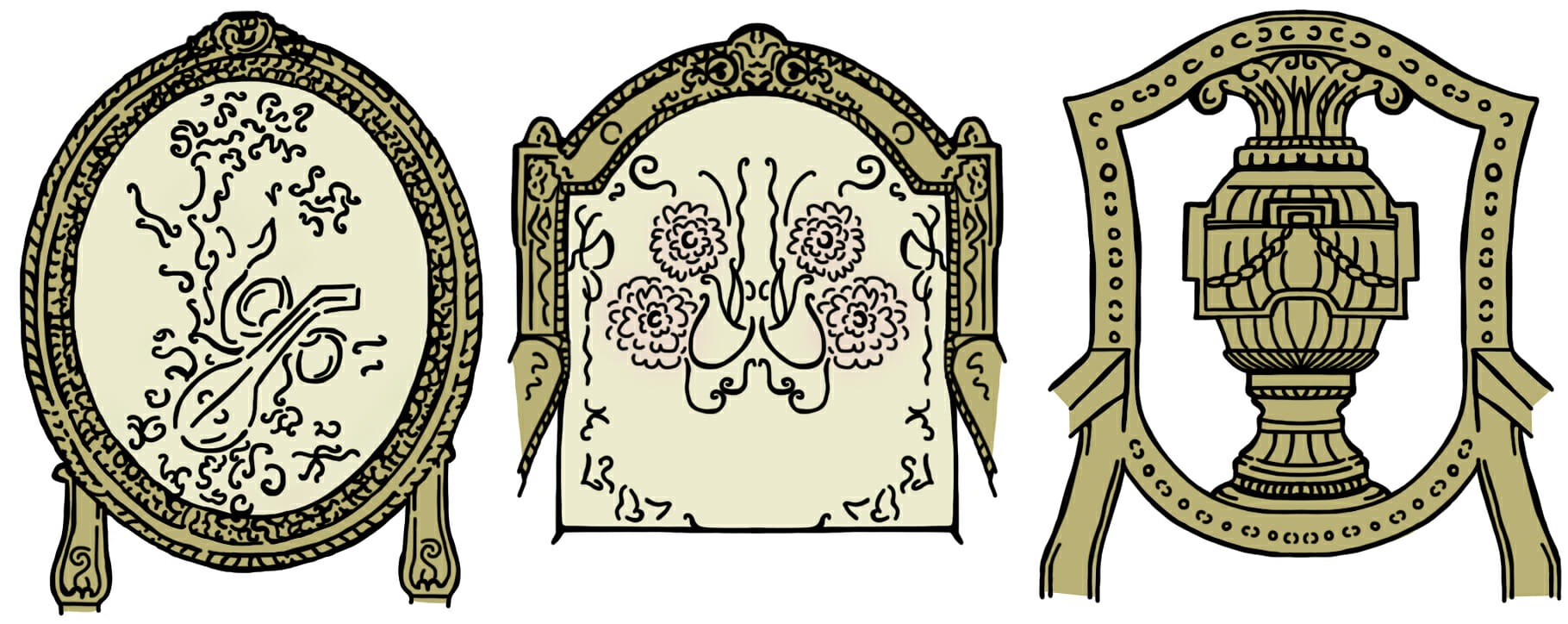
In the early 19th century, chairs become more simplified in design (except for the sometimes extravagant use of neoclassical decoration). Full dining room sets also become more commonplace in the homes of the gentry and and middle classes. Simple ladder back chairs or designs with spindle backs were made from the 1760s onwards, ladder backs were usually from Yorkshire or Lancashire whilst spindle backs were a specialty of Cheshire. These chairs are usually made from ash, as it is an easier timber to turn.
Below left: a late 18th century chair with a Chippendale gothic style.
Below centre: an early 19th century ladder back chair.
Below right: a late 18th century lyre-back chair with a neoclassical influence.

Below left: a late 18th century chair with a wheat-sheaf splat.
Below centre: a Sheraton style armchair from 1790.
Below right: an early 19th century Sheraton style chair with a square frame.
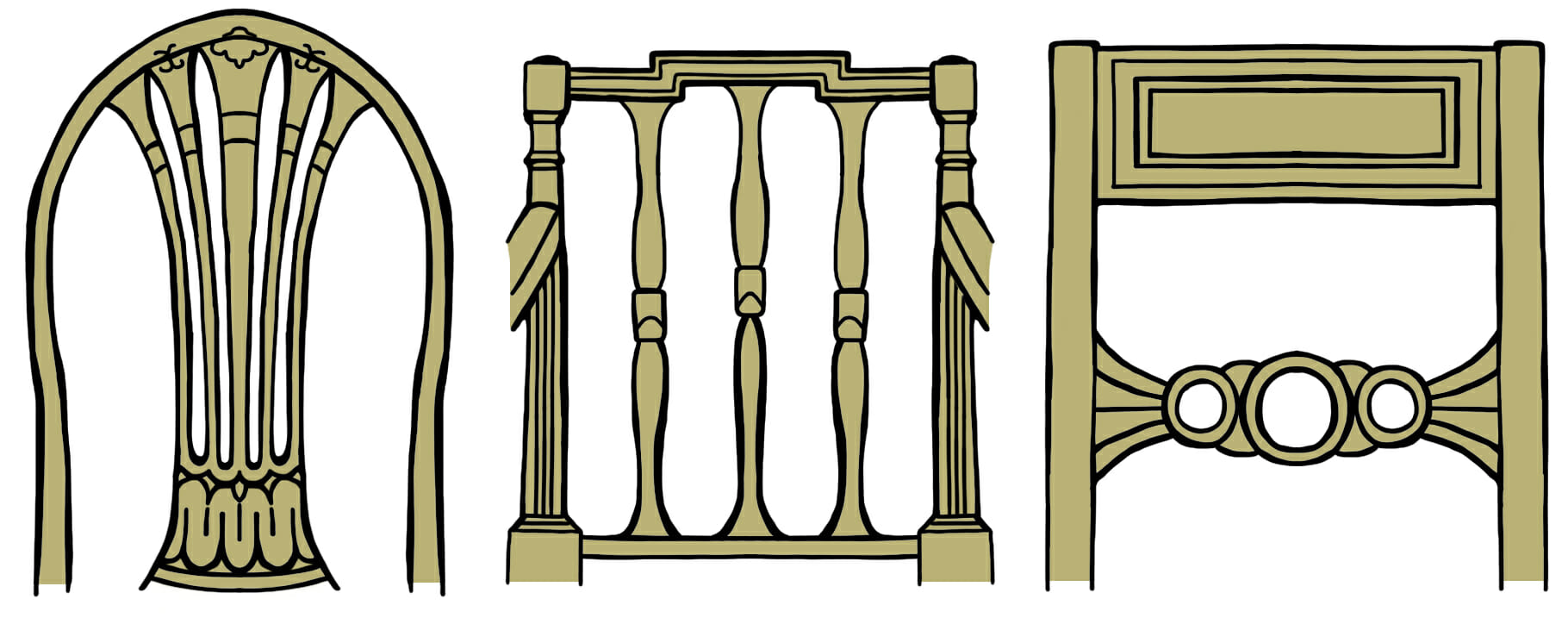
The regency period had a romantic and academic focus on classical history, philosophy and design. This was reflected in the decorative features found on chairs of the early 19th century and late 18th century. Typical features include lion heads, lyres, imperial motifs and Roman or Greek inspired patterns. This style began in the late 18th century and continued through to the early 19th century.
Below left: a Chippendale/Hepplewhite chair from 1800.
Below centre left: a Hepplewhite chair from the late 18th century.
Below centre right: a Sheraton chair design from 1790/1810.
Below right: an empire style chair from 1810-20.

Below left: an empire style armchair with a neoclassical carving of an amphora and plate, early 19th century.
Below centre: an empire lion head chair from the early 19th century.
Below right: an early Empire style armchair with a plain back.
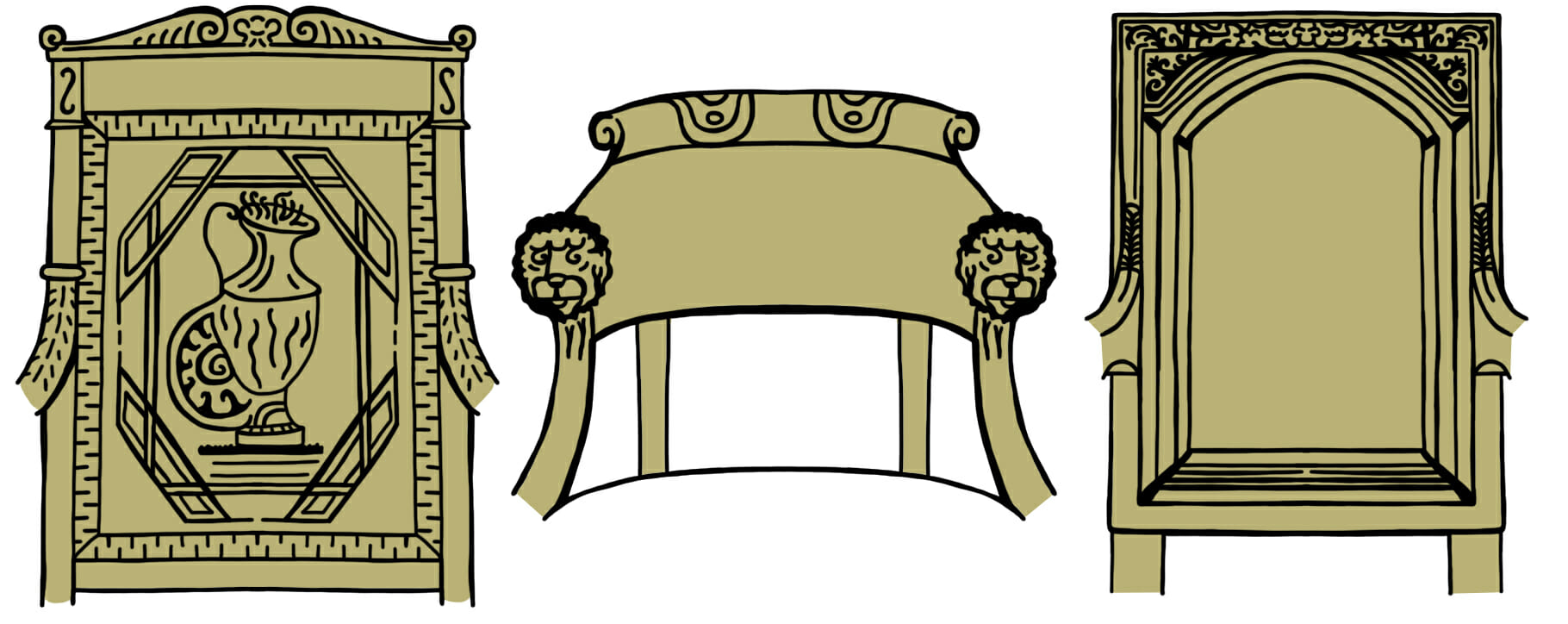
As the Victorian era approached, hand crafted chairs became less common as large scale manufacturing grew in its ability to produce numerous chairs that either had a basic utilitarian use or replicated the fashions of the era, such as Gothic revival. Victorian and William IV style chairs are usually well made compared with today’s standards, but may be less refined than earlier eras.
Below left: a regency chair with a Roman key pattern, 1820.
Below centre: a regency rope-twist chair, 1820.
Below right: an early Victorian chair, 1840.

Victorian craftsmen preferred the use of walnut, rosewood or mahogany in their chair design, original chairs from the 19th century often use a good quality timber that has stood the test of time.
Below left: a late 18th century Windsor gothic chair.
Below centre: an early 19th century spindle-back chair.
Below right: an early 19th century plain Windsor chair.
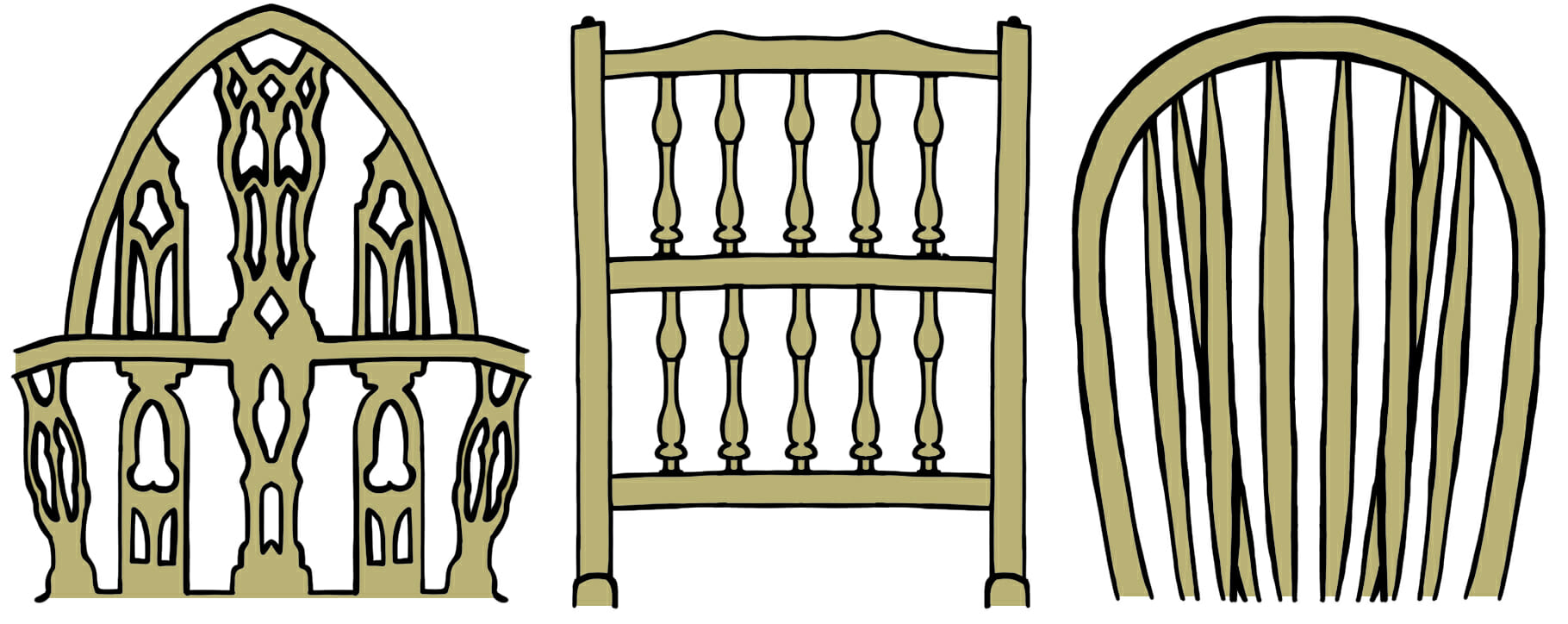
Early 19th century Windsor chairs (seen above on the far left and right) are still prized by collectors, but may have faced damage to their decorative features over time. Windsor chairs are a traditional English design with the most recognisable having a hoop-shaped top and a wheel in the central splat.
Below left: a Victorian papier-mache chair design.
Below centre left: a Victorian papier-mache chair design with a gothic revival influence.
Below centre right: a small Victorian court chair.
Below right: a button-back Victorian chair.
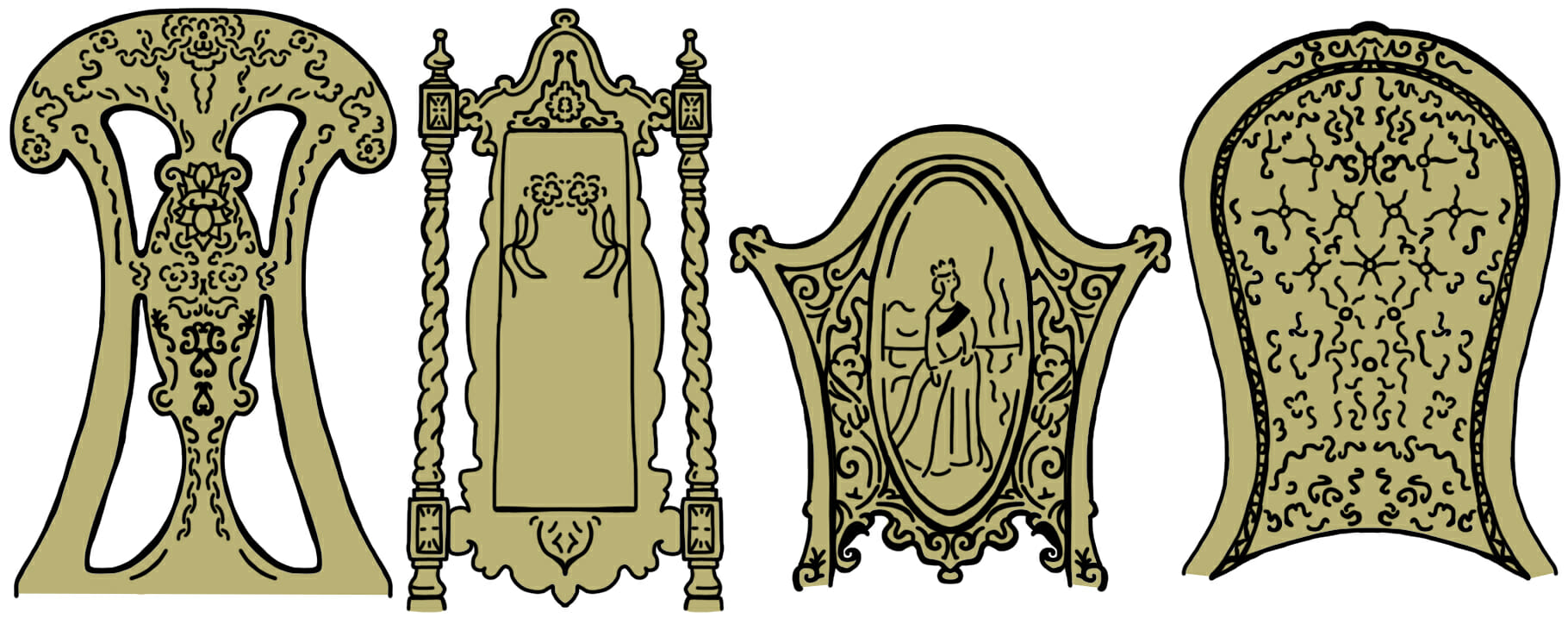
Victorian chairs, especially armchairs, may feature deep buttoning on their upholstery. Scoop back library chairs or grandfather chairs are popular, usually from part of a full suite including a sofa, an armchair and upholstered side chairs.
Below left: a mid 19th century button-back chair.
Below centre left: a Victorian chair from the 1850s.
Below centre right: an early Victorian chair with a gothic design, 1860s.
Below right: a balloon-back chair from 1850-70.
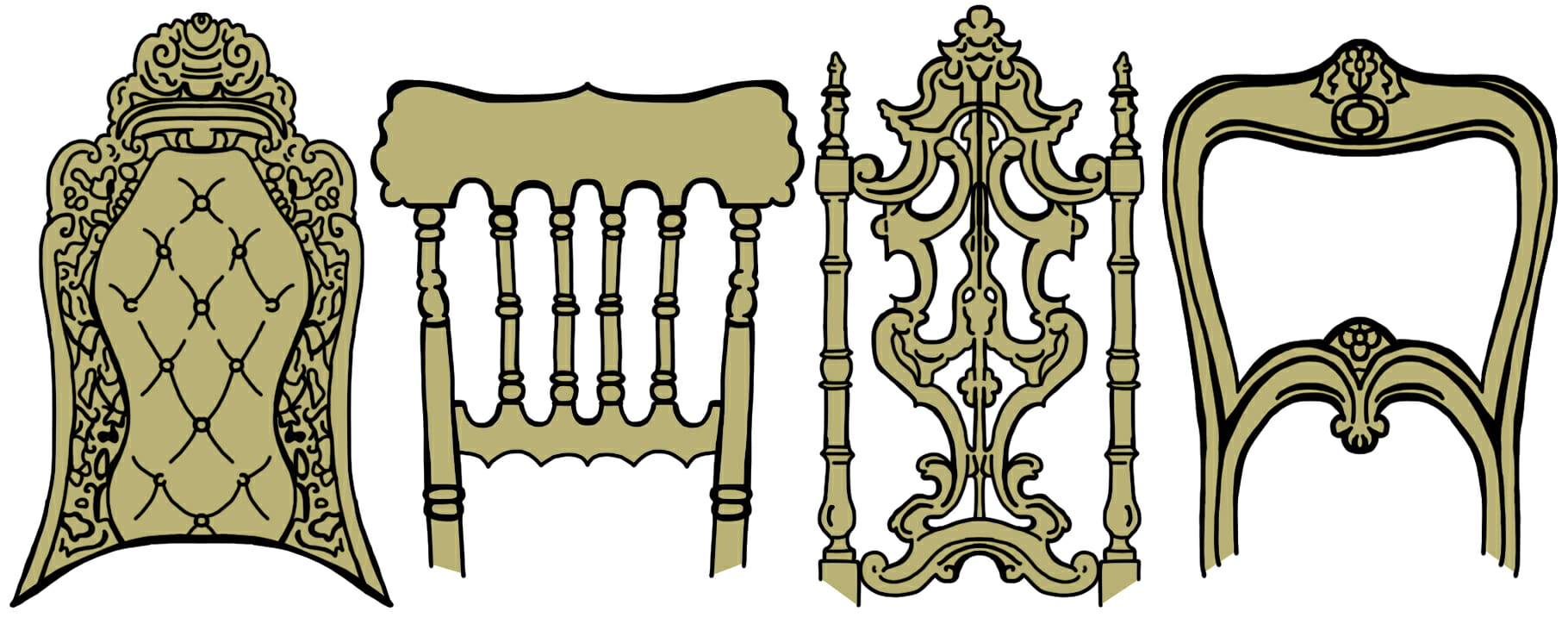
Carolean chair designs were named after the aesthetic of Charles II. Although they were not quite in keeping with gothic revival, Victorian Carolean chairs were also a use of design nostalgia in the ever changing fashions of the mid 19th century.
Below left: a gothic revival square-backed chair from 1830.
Below centre: a Victorian balloon-back chair from 1850.
Below right: a mid-19th century Carolean chair.
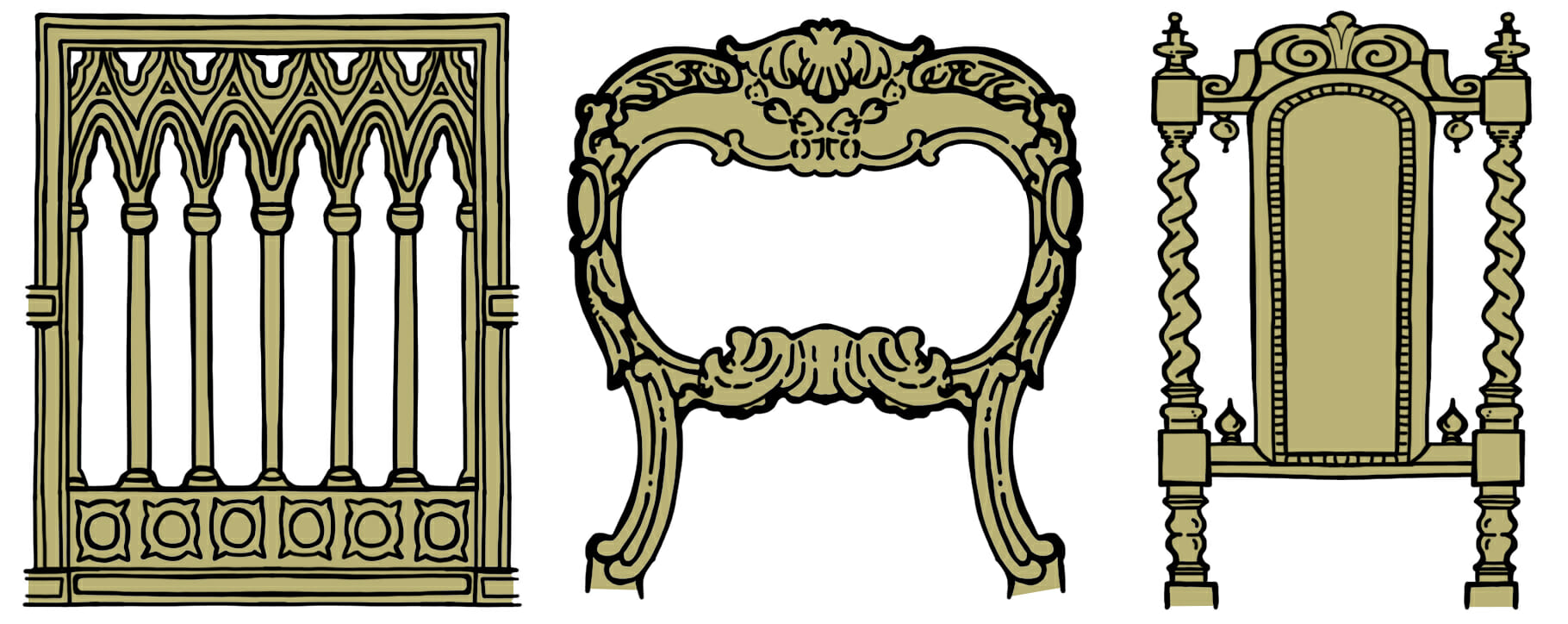
Ballon-back chairs usually have a wide open back with an upholstered seat, their structure is most often walnut. Balloon-back chairs were produced between 1850 and 1880-90, inspired by French designs.
Below left: a Victorian balloon-back chair, mid 19th century.
Below centre: a Victorian upholstered chair, 19th century.
Below right: a Victorian side chair / dining chair, 19th century.
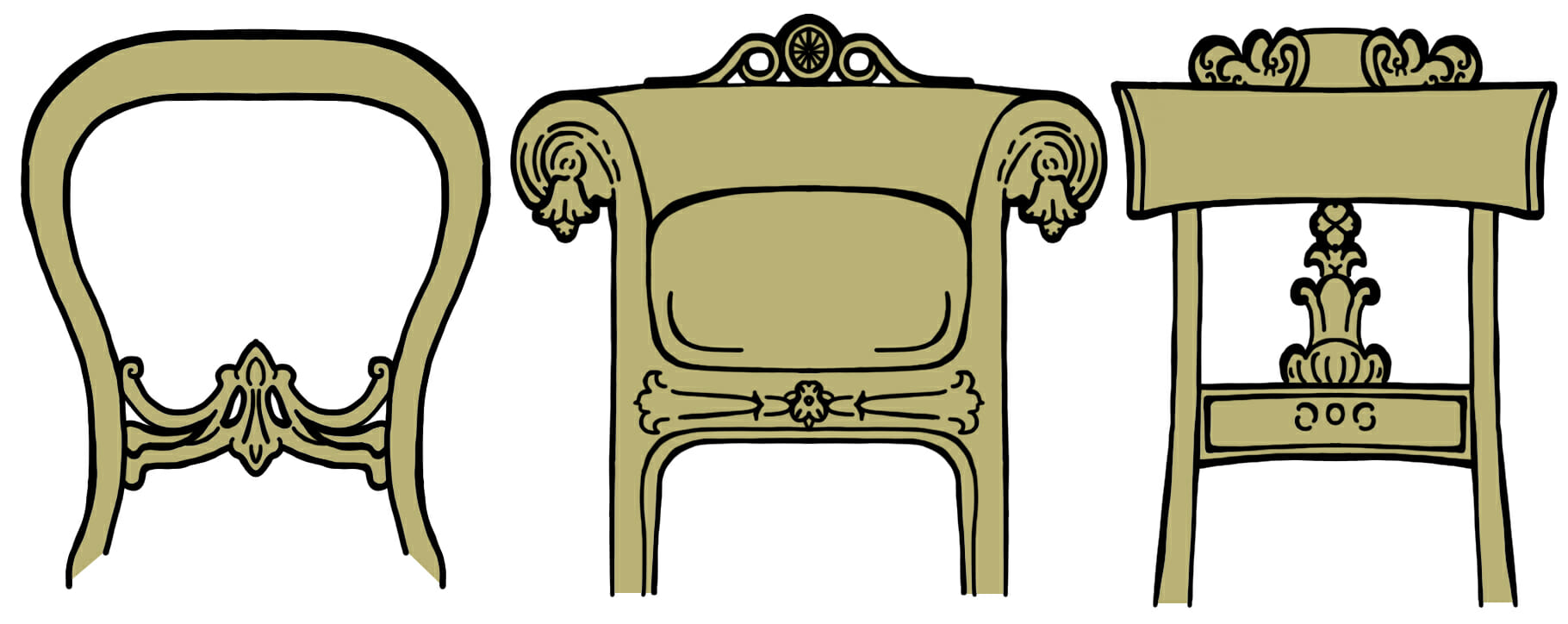
Chair leg styles
The legs of a chair have also changed throughout history. Here are some typical examples to help you discover more about your antique furniture, though it is best to keep in mind that may styles have been copied by later designers. In this case looking for signs of historic craftsmanship may help in your age assessment.
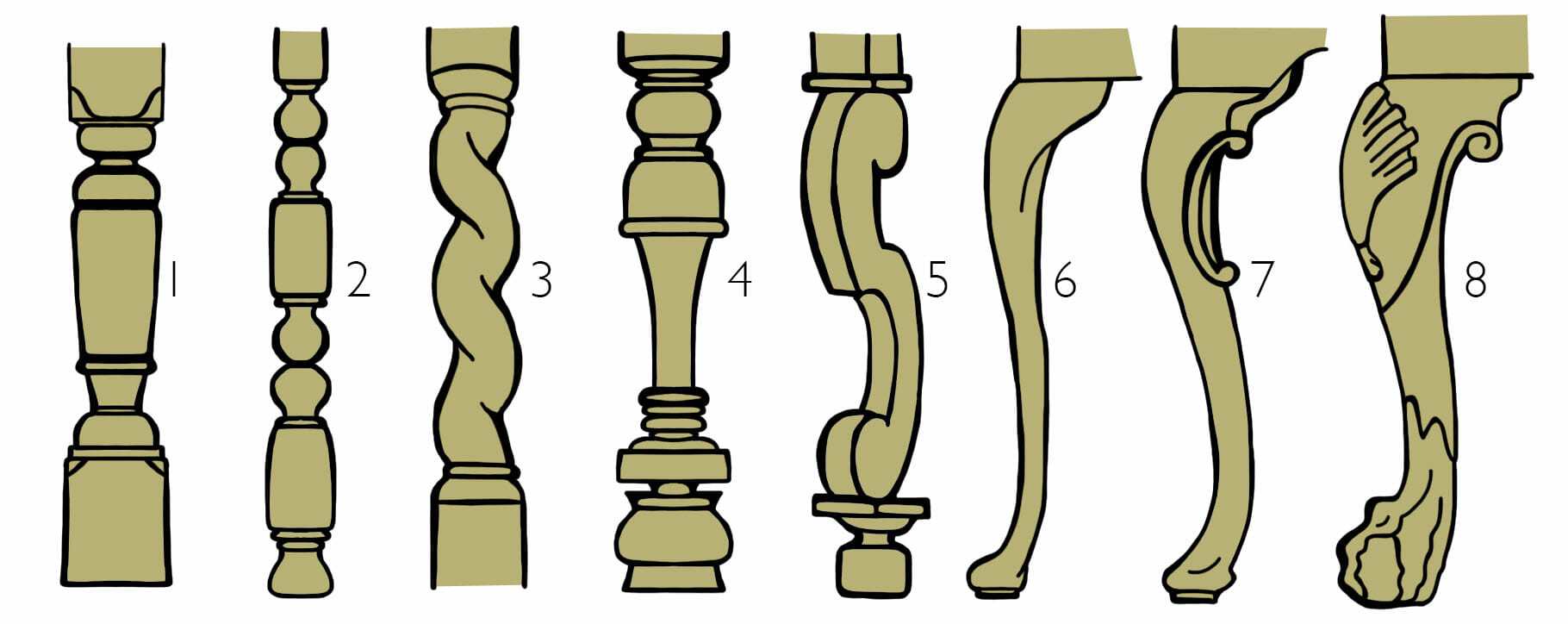
- 16th century baluster leg
- Late 17th century bobbin turned leg
- Mid to late 17th century barley twist leg
- Late 17th century inverted cup baluster leg
- Late 17th century double scroll leg
- Early 18th century cabriole leg
- Early 18th century carved cabriole leg
- 18th century cabriole leg with baroque/rococo shell design
- Early Georgian cabriole leg with decoration
- Mid 18th century cabriole leg with claw and ball foot
- Chamfered leg, 1750-80
- Mid 18th century blind-fretted leg
- Late 18th century turned leg
- Early 19th century sabre leg
- Victorian Carolean leg, 1845
- Mid 19th century reeded leg
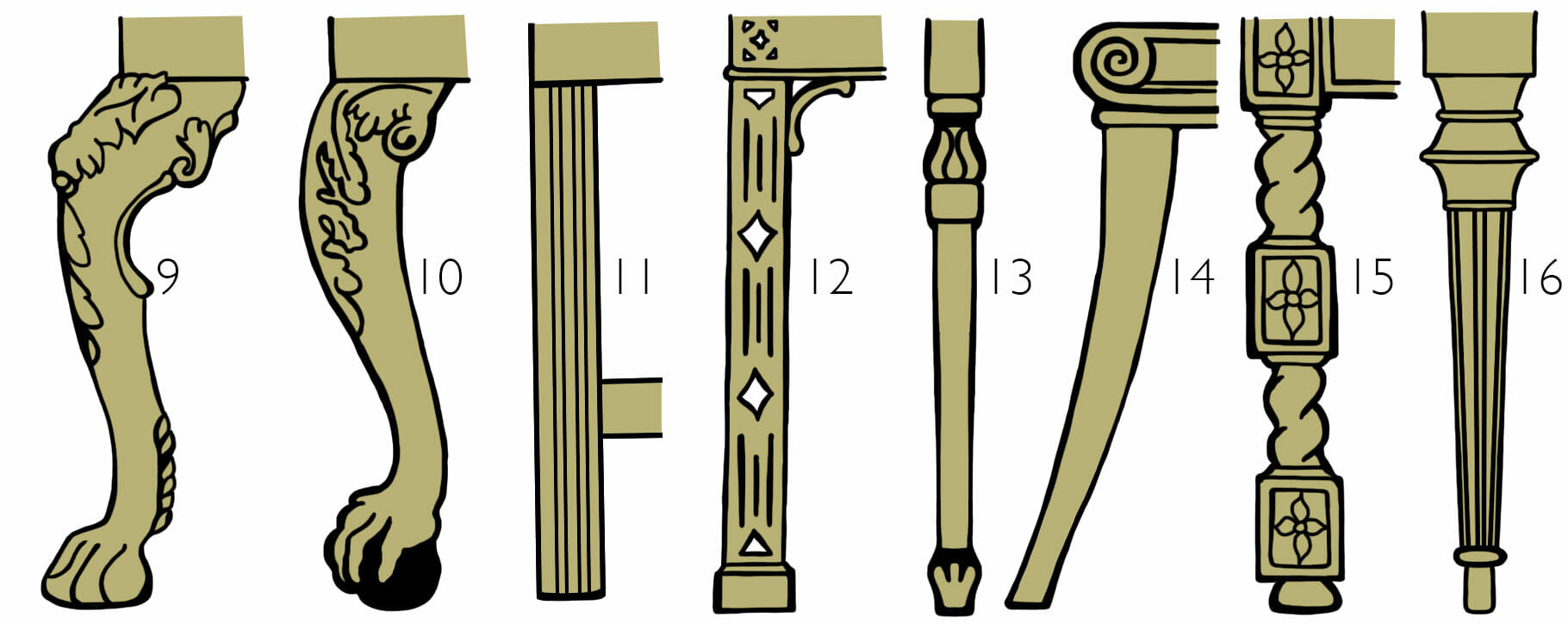
How can we help?
If you have a chair that requires expert care, cleaning or restoration, please get in touch with our helpful team for more information.
Email us via [email protected] or call 0207 112 7576






